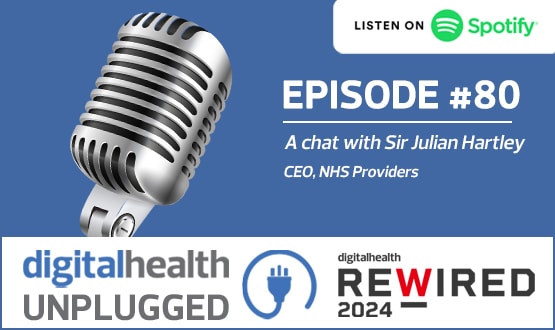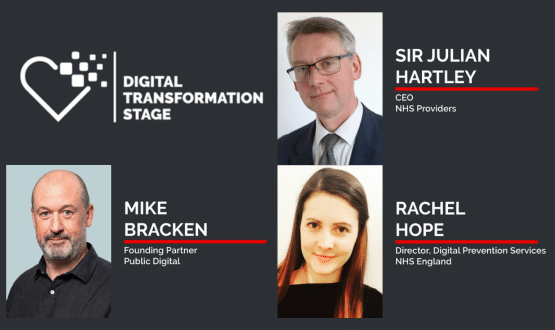Digital maturity: what does it mean, and how are we doing?
- 5 April 2016

The definition of digital maturity in health care may be contentious; certainly, different people have different views. Just this past week, someone I was talking with offered the definition: “displaying all clinical information on a screen”.
For me, that is simply not ambitious enough, and we need to make sure that people have greater expectations. It’s all about fulfilling the potential – using technology to make the care and treatment of a patient safer, and using data so that we can learn from both good and bad outcomes.
A starting point, not a path
When we talk about ‘digital maturity’ and ‘being paperless’ are people actually talking about improving patient outcomes? I’d say not; or at least, not consistently. Saving money, being efficient, improving services, facilitating transitions of care – yes. Using technology and information to make care safer – no, not always.
But there are places to look for better answers. The National Information Board provides us with a ‘framework for action’ for informatics. ‘Personalised Health and Care 2020’ focuses on outcomes as the correct driver. However, the framework is not detailed enough to provide a clear path to digital maturity.
The framework also describes a new maturity tool as a method to assess the ‘effective’ use of information technology. Some, myself included, we were hoping this Digital Maturity Index would show the path and that, in the self-assessment questionnaire, we would clearly see the steps to maturity.
The building blocks are mostly there in the questionnaire, which includes the often overlooked “need to align with the business strategy”. There are further positive signs, such as the inclusion of standardisation and supporting infrastructure, resourcing, and governance; all of which are vital to success.
However, the self-assessment would be a more powerful tool if it clearly linked the pieces into a path that shows the desired progression. It is unavoidable that the self-assessment in itself is not a maturity model that can stand independently, but more a starting point.
The intent must be that the development of Local Digital Roadmaps by healthcare communities will provide the direction, but it is questionable whether this will work in every locality. A detailed, ideal roadmap to set clear expectations on how to deliver digital maturity would help to focus discussions and make decisions.
It’s incumbent on us to get this right, and agree the right approach. Because making the wrong decision due to lack of understanding now will cost us money and credibility, possibly undermining the whole endeavour.
The danger of digitising paper
So what is missing in the DMI self-assessment that would be helpful? Well, clearly it is key to define a proper “ideal” path; that is, interim goals. Otherwise, local areas may define going paperless in a way that ends up being digital on paper (excuse the irony) but without any meaningful benefits or outcomes.
One interim goal would add to maturity by building off the previous goal. For example, access to information, if done correctly, would enable automatically generated support for decisions for clinicians. If done poorly, we might generate information, but that information could be of limited use.
The current approach also runs the risk of focusing too much on cost benefits of each individual piece, rather than looking at the whole.
Many of the benefits are long term in nature and require substantial automation and a willingness to change practice and working culture. Allowances must be made for this and we need to understand that every investment may not have immediate documentable, financial gain.
Focusing on benefits
The current NHS DMI self-assessment outlines functionality, but does not adequately measure the outcome. For example, one trust might implement drug-allergy alerting and ignore the alerts. Another trust might implement it perfectly but only on one ward.
The functionality would exist (‘tick the box’) but the benefit would be limited. The danger is that these trusts might be considered mature without sufficiently changing outcomes. We need to require the right measurements to ensure the model is working.
On top of that, we need to make sure that ‘working’ means ‘actually helping patients and improving outcomes’. By doing it right, the technology could virtually eliminate preventable adverse drug events, standardise and expedite treatment; amongst a host of other benefits. By doing it wrong, this may not happen.
Avoid tick-box mentality
We are looking to NHS England’s new model and the Local Digital Roadmaps to show us the ideal path to digital maturity to provide a common understanding and structure our thinking.
There are a number of ways that this could be done. NHS England could be explicit in measuring maturity via outcomes without regard for priorities; it could be clear on the order of priorities; or it could “help” each locality prioritise based on their needs.
This last method may be favoured by NHS England. This could be a more complicated approach; and would place some onus on them to ensure each path is optimal. If this approach is also tied to funding and is well regulated, though, this could be successful.
We need our paths to be focused on our patients and their outcomes and not become a box-ticking exercise. If we do this right, informatics will change the delivery of healthcare for the better (and make it cheaper and safer). If we do this wrong, we spend a lot of money and gain little.
|
Cindy Fedell
|





